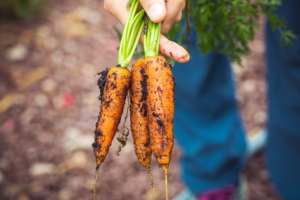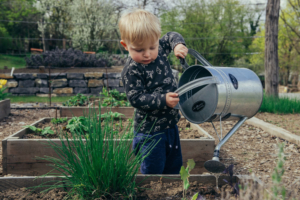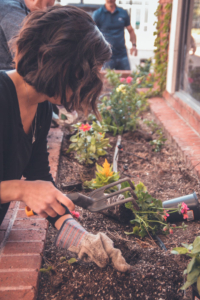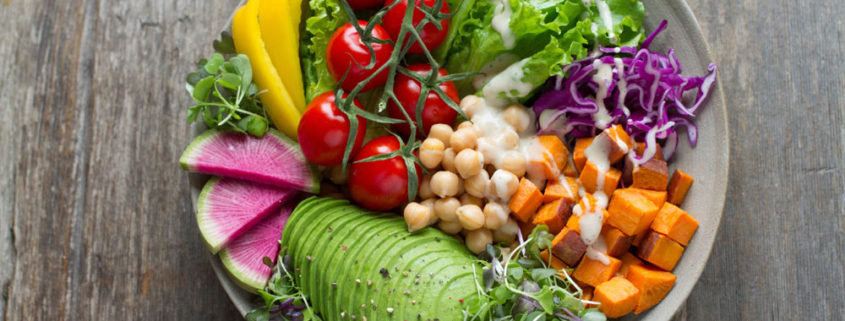How to Start a Garden: A Step-by-Step Guide
Starting a garden for emergency preparedness as a hobby is a wise and practical step for a reliable source of fresh food. If you are new to gardening, you might be wondering how to start a garden from scratch. Whether a spacious backyard or just a small balcony, today we are going to help you get your garden started.
1. Choose the Right Location
The first step in starting a garden is selecting the right location. Consider these factors:
- Sunlight: Most plants require at least 6 hours of sunlight each day. Observe sun movement of your garden site for a few days to determine the amount of sun it receives and choose plants that match those conditions.
- Space: The available space will dictate the size and type of garden you can build. You can garden in the ground, raised beds, containers, or vertical gardens, depending on your space.
2. Prepare the Soil
Fertilizing a garden provides plants with the necessary nutrients for healthy growth and abundant yields. Fertilizing is slightly different from composting, as it involves the addition of specific nutrients, whereas composting is more about improving soil structure and overall fertility. Here’s what you need to know about fertilizing your garden:
When to Fertilize:
- Before Planting: Prepare the soil by incorporating compost or well-rotted manure a few weeks before planting. This provides a slow-release source of nutrients.
- At Planting: When transplanting seedlings or setting out new plants, you can add a balanced, granular, or slow-release fertilizer according to the package instructions. This gives your plants an initial nutrient boost.
- Depending on the type of plants and your garden’s needs, you may need to fertilize during the growing season. Generally, it’s a good idea to fertilize your garden in spring and early summer when plants are actively growing.
- Some plants, like tomatoes or squash, are heavy feeders and may benefit from additional applications of fertilizer during the growing season.
Signs It’s Time to Fertilize:
- If you notice that the older leaves of your plants are turning yellow too early, it can be a sign of nutrient deficiency. This is a common indicator that your plants may need additional fertilization.
- Slow growth and undersized fruits can be signs that your plants are not getting enough nutrients.
3. Plan Your Garden
Now it’s time to decide what you want to grow in your garden. Consider the following:
Plant Selection: Choose plants that are well-suited to your region and garden conditions. It’s a good idea to start with easy-to-grow vegetables and herbs like tomatoes, lettuce, basil, and mint. Make a list of your favorite foods and see what is growable in your area from that list! Check out our other gardening articles, including Canada’s plant growing zones!
Garden Seed Bank – Let Us Help You Get Started
These seeds are part of our Garden Seed Bank:
Beans (25g) – Blue Lake Bush – Approximately 2-4 seed per gram
Pepper (0.5g) – California Wonder Bell – Approximately 165 seeds per gram
Cucumber (1g) – Marketmore 70 – Approximately 40 seeds per gram
Carrots (1g) – Scarlet Nantes – Approximately 650-825 seeds per gram
Lettuce (1g) – Parris Island Romaine – Approximately 1036 seeds per gram
Cabbage (0.5g) – Golden Acre Y.R. – Approximately 315 seeds per gram
Beets (5g) – Detroit Dark Red – Approximately 55 seeds per gram
Peas (25g) – Green Arrow – Approximately 3-4 seeds per gram
Swiss Chard (3g) – Lucullus – Approximately 50-60 seeds per gram
Parsnip (1g) – Harris Model – Approximately 430 seeds per gram
Tomato (0.1g) – Bonny Best – Approximately 405 seeds per gram
Radish (5g) – Cherry Belle – Approximately 75 seeds per gram
Broccoli (1g) – Calabrese Organic – Approximately 315 seeds per gram
Squash (1g) – Australian Butter – Approximately 12-15 seeds per gram
Spinach (5g) – Bloomsdale Dark Green – Approximately 100 seeds per gram
Onion (0.5g) – Yellow Sweet Spanish – Approximately 250-270 seeds per gram
Corn (25g) – Early Golden Bantam Sweet – Approximately 3-4 seeds per gram
Cantaloupe (0.25g) – Hales Best – Approximately 40-45 seeds per gram
Cauliflower (0.1g) – Amazing – Approximately 250-315 seeds per gram
Zucchini (2g) – Black Beauty – Approximately 7-14 seeds per gram
Companion Planting:
Companion planting is a gardening practice that involves strategically planting different types of plants together to enhance their growth, protect them from pests, and improve overall garden health. This practice is based on the idea that certain plant combinations can benefit each other through various mechanisms. Here’s more information about the benefits of companion planting:
- Pest Control: Some plants release chemicals that deter or repel specific pests. For example:
- Marigolds can help deter nematodes and repel aphids.
- Nasturtiums can attract aphids away from other plants.
- Basil can deter flies and mosquitoes.
- Chives can help repel carrot flies.
- Attracting Beneficial Insects: Certain plants attract beneficial insects like ladybugs, lacewings, and pollinators, which help control garden pests and improve pollination. For example:
- Sunflowers attract pollinators like bees.
- Dill and fennel attract beneficial insects like parasitic wasps that prey on garden pests.
- Some plants, like legumes (peas, beans, and clover), have the ability to fix atmospheric nitrogen into the soil. This benefits neighboring plants by providing a source of natural fertilizer.
- Companion planting maximizes space in your garden. Tall plants provide shade to those that prefer cooler conditions. Ground covers can help retain soil moisture.
- Improved Flavor and Growth: Certain plant combinations improve the flavor or growth of neighboring plants. For example:
- planting herbs like basil, oregano, or parsley near tomatoes can enhance their flavor.
It’s important to note that while companion planting has many benefits, not all plant combinations work as intended, and some traditional pairings may not be as effective as once believed. The effectiveness of companion planting can also depend on your local climate and soil conditions. Experiment and have some fun with it!
Planting Schedule:
Hardy vegetables and can tolerate cooler temperatures, so they can be planted early, even before the last frost. Others are more sensitive to cold and should be planted after the last frost to avoid damage. Here’s a sample breakdown of both categories, keeping in mind your zone (found here) can affect this list:
Vegetables That Can Be Planted Early (Before the Last Frost):
- Leafy greens like spinach, lettuce, kale, and arugula can be planted early. They can tolerate light frost and even some snow.
- Root Vegetables: Carrots, beets, radishes, and parsnips can be sown early in the season. The cold temperatures can enhance the sweetness of some of these roots.
- Peas
- Broccoli and Cauliflower
- Onions and Leeks
Vegetables That Should Be Planted After the Last Frost:
- Tomatoes
- Peppers
- Cucumbers, Squash, and Melons
- Beans: Both bush and pole varieties, prefer warm soil and should be planted after the last frost.
- I can attest to this! You would think beans could handle it, but when I plant too early they do not come up.
- Corn
- Basil and Other Herbs
- Warm-Season Greens: Vegetables like okra and sweet potatoes are best planted after the last frost when the soil has warmed.
4. Plant Your Garden
Pro-tip: Mark your rows or sections. I like to draw the layout and save it into my phone. This has been my most cost effective and simple method
With your garden plan in place, it’s time to get your hands dirty:
- Spacing: Follow the spacing recommendations on your seed packets or plant labels to give your plants room to grow. If you have a small garden plot, consider square foot block gardening, or vertical gardening.
- Planting Depth: Different seeds have different planting depths. Be sure to plant them at the right depth, usually indicated on the seed packet.
- Watering: Water thoroughly after planting, and be consistent with your watering routine. Keep the soil consistently moist but not waterlogged.
5. Maintain Your Garden
Gardening is an ongoing commitment. Regular maintenance is key:
- Weeding: Keep an eye out for weeds and remove them promptly. Weeds compete with your plants for water and nutrients.
- Fertilizing: Depending on your soil and the needs of your plants, you may need to fertilize during the growing season.
- Be vigilant for signs of pests and diseases. Early detection and proper management prevent damage to your garden.

Pro Tip: Consider non-creepy crawly “pests” that could get to your garden such as deer or cats – maybe your garden needs a fence around it? I had a late strawberry yield and all of them were nipped right off the vine by a friendly neighborhood Bambi
Harvesting:
When your plants produce fruits or vegetables, harvest them at their peak ripeness. This will ensure the best flavor and quality. Here are some pro tips on harvesting your garden produce:
- Harvest at the Right Time: Vegetables, fruits, and herbs taste best and have the most nutritional value when picked at the right time. Research the ideal harvest time for each plant in your garden.
- Use the Right Tools: Proper tools can make the harvesting process more efficient and less damaging to the plants.
- Gentle Handling
- Harvest in the Morning: Many vegetables and herbs are best harvested in the morning when they are crisp and full of moisture. As the day progresses, heat and sunlight can cause produce to wilt.
- Harvest Regularly: Many crops, like zucchini and tomatoes, produce more if you harvest them regularly.
- Know How to Cut or Snap: For crops like beans, peas, or asparagus, learn the proper way to cut or snap them to ensure the plant continues to produce.
Conclusion:
Starting a garden can be a learning experience, so don’t be discouraged by setbacks or mistakes. Gardening is a journey, and each season provides opportunities to improve and enjoy the fruits of your labor. Happy gardening!



